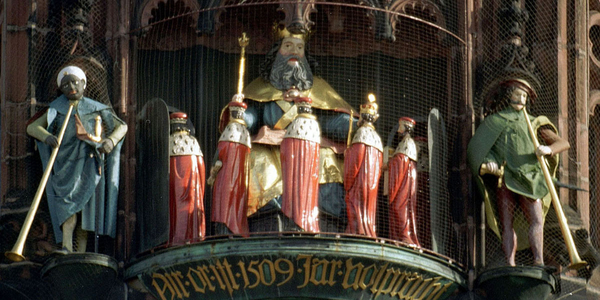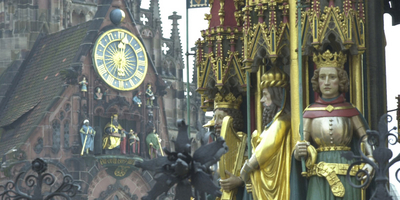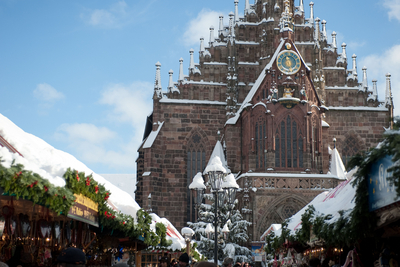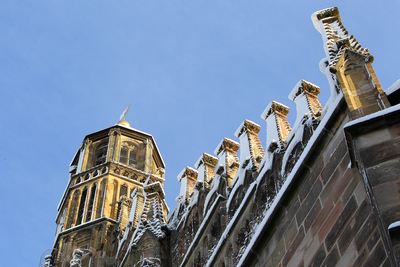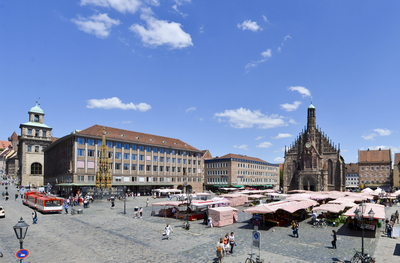Church of Our Lady
Hauptmarkt 14, 90403 Nürnberg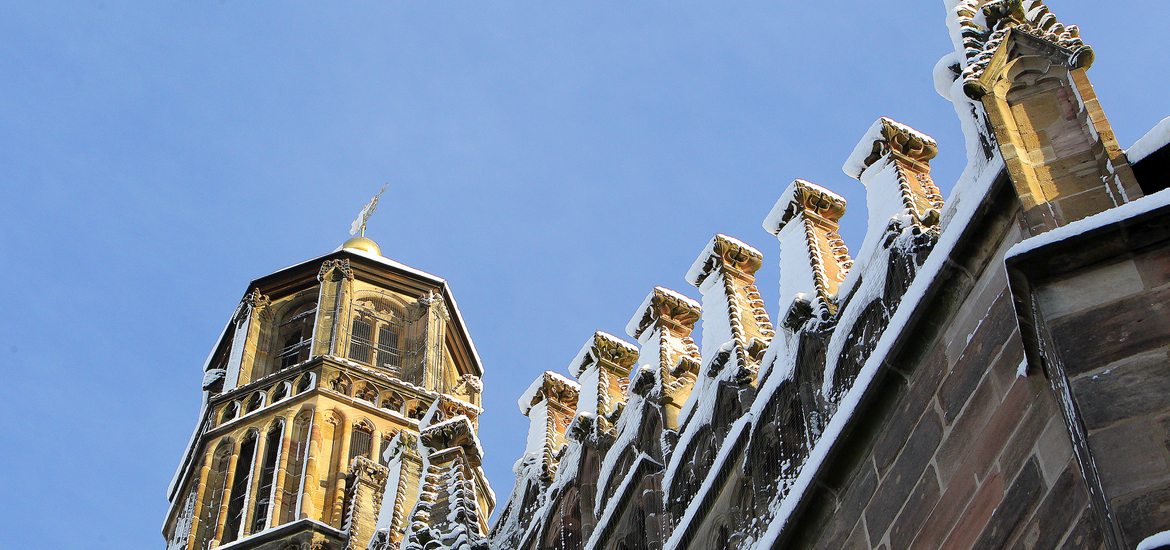
1361 the imperial regalia were displayed to the public for the first time for the christening of his son Wenzel, heir to the throne. The “Männleinlaufen” (mechanical clock and glockenspiel, every day at noon) recalls the proclamation of the Golden Bull of 1356: seven Electors pay homage to Emperor Karl IV sitting on his throne. Richly decorated interior. The Tucher altar (ca. 1445) is considered the most important work of panel painting in the pre-Dürer period.
Key facts:
- together with St. Sebald and St. Lorenz one of the three most important churches in Nuremberg
- first gothic hall church in Franconia
- Nuremberg's three oldest stained glass window can be found here
- the "Männleinlaufen" glockenspiel was created in 1509 and stored in the art bunker during World War II

